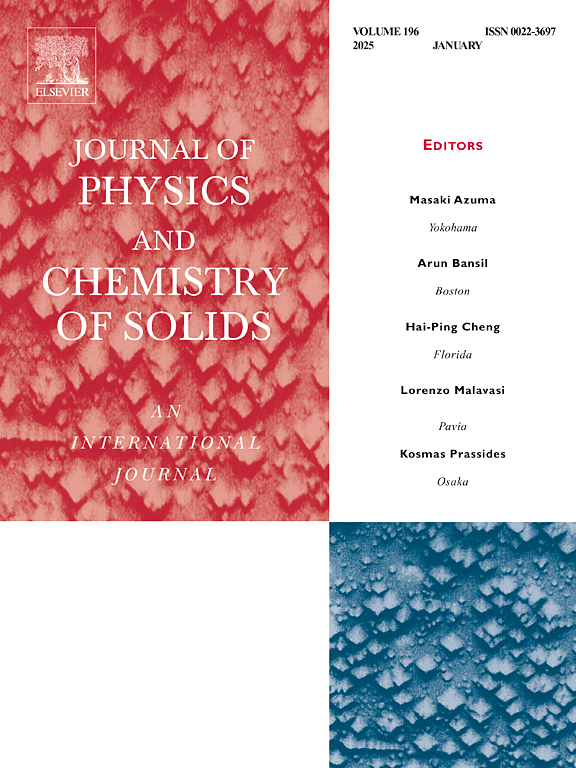Synthesis of MnOx catalysts via sucrose reduction deposition technique for efficient low-temperature NH3-SCR
IF 4.3
3区 材料科学
Q2 CHEMISTRY, MULTIDISCIPLINARY
引用次数: 0
Abstract
Air pollution is significantly affected by nitrogen oxides (NOx), and among various denitrification technologies, NH3-SCR is commonly regarded as the most potent one. In this research, a series of MnOx-1:a (where a = 1,3,5,10) catalysts were synthesized by controlling the molar ratios of KMnO4 and sucrose using the sucrose reduction deposition method. Notably, the MnOx-1:5 catalysts demonstrated excellent N2 selectivity and nearly 100 % NOx conversion within the extensive temperature range of 80–200 °C. Furthermore, the catalyst exhibited exceptional resistance to sulfur poisoning, maintaining over 90 % NOx conversion at 140 °C for more than 5 h with a concentration of 100 ppm SO2 present. Additionally, at a molar ratio of 1:5 between sucrose and KMnO4, the catalyst prepared exhibited rich pore structures, which could effectively adsorb the reactive gases and facilitate the SCR reaction process. XPS analysis indicated that the MnOx-1:5 catalyst has more Mn4+ and chemisorbed oxygen (Oα), contributing to its enhanced reduction capacity. Moreover, the MnOx-1:5 catalyst has more acid content, which helps to absorb and activate the reactant molecules thereby facilitating the NH3-SCR reaction process. Therefore, the MnOx-1:5 catalyst demonstrates a wide operational temperature range, from 40 to 240 °C, and exhibits exceptional resistance to sulfur poisoning during the NH3-SCR reaction. The above results offer novel insights for the synthesis process of NH3-SCR low-temperature catalysts.

蔗糖还原沉积法合成高效低温NH3-SCR MnOx催化剂
氮氧化物(NOx)对大气污染的影响很大,在各种反硝化技术中,NH3-SCR通常被认为是最有效的一种。本研究采用蔗糖还原沉积法,通过控制KMnO4与蔗糖的摩尔比,合成了一系列MnOx-1:a(其中a = 1,3,5,10)催化剂。值得注意的是,MnOx-1:5催化剂在80-200°C的广泛温度范围内表现出优异的N2选择性和接近100%的NOx转化率。此外,该催化剂表现出优异的抗硫性,在140°C下,在100 ppm SO2浓度下,保持超过90%的NOx转化率超过5小时。此外,当蔗糖与KMnO4的摩尔比为1:5时,制备的催化剂具有丰富的孔隙结构,可以有效吸附反应气体,促进SCR反应过程。XPS分析表明,MnOx-1:5催化剂具有更多的Mn4+和化学吸附氧(Oα),有助于增强其还原能力。此外,MnOx-1:5催化剂的酸含量较高,有利于吸附和活化反应物分子,从而促进NH3-SCR反应过程。因此,MnOx-1:5催化剂的工作温度范围从40°C到240°C,并且在NH3-SCR反应中表现出优异的抗硫中毒性能。上述结果为NH3-SCR低温催化剂的合成工艺提供了新的思路。
本文章由计算机程序翻译,如有差异,请以英文原文为准。
求助全文
约1分钟内获得全文
求助全文
来源期刊
CiteScore
7.80
自引率
2.50%
发文量
605
审稿时长
40 days
期刊介绍:
The Journal of Physics and Chemistry of Solids is a well-established international medium for publication of archival research in condensed matter and materials sciences. Areas of interest broadly include experimental and theoretical research on electronic, magnetic, spectroscopic and structural properties as well as the statistical mechanics and thermodynamics of materials. The focus is on gaining physical and chemical insight into the properties and potential applications of condensed matter systems.
Within the broad scope of the journal, beyond regular contributions, the editors have identified submissions in the following areas of physics and chemistry of solids to be of special current interest to the journal:
Low-dimensional systems
Exotic states of quantum electron matter including topological phases
Energy conversion and storage
Interfaces, nanoparticles and catalysts.

 求助内容:
求助内容: 应助结果提醒方式:
应助结果提醒方式:


